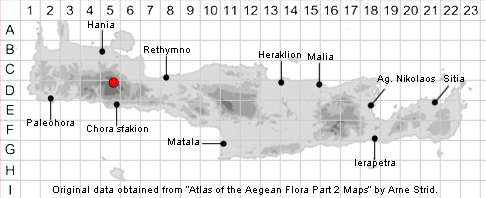SPECIES DESCRIPTION
ERIGERON GLABRATUS
Family and Genus:- See- COMPOSITAE
Common Names:- None
Homotypic Synonyms:- Erigeron acris var. glabratus, Erigeron alpinus,
Erigeron alpinus subsp. glabratus, Erigeron uniflorus subsp. glabratus.
Meaning:- Erigeron (Gr) Early-old-man. A name used by the Greek philosopher
Theophrastus for early flowering fleabanes.
Glabratus (L) Becoming smooth or glabrous.
General description:- Small, ± caespitose perennial.
Stem:-
1) Up to 20(-35) cm.ascending to erect, often weak. Simple or very sparingly
branched.
Leaves:-
1) Basal, up to 5(-7) × 0·6(-0·8) cm. Narrowly spathulate with an attenuate petiole,
sparsely ciliate but otherwise glabrous or almost so.
2) Cauline, up to 10, small, linear.
Flowers:-
1) Capitula, 1-2(-7).
2) Involucre very broadly campanulate.
3) Bracts, rarely more than 0·7 mm wide, with a sparse indumentum,
usually green with a brown centre, rarely lilac distally.
4) Florets, dimorphic, inner hermaphrodite and tubular, the outer female with narrow,
rose-pink ligules up to twice as long as the involucre.
5) Ligules, usually lilac, rarely white.
6) Phyllaries, c. 5 mm, linear-lanceolate, ± pilose.
Key features:
1) Indumentum, variable but short glandular hairs absent.
2) Involucral bracts, sparsely pubescent to almost glabrous, usually green to the
apex.
Habitat:- Rocky limestone slopes at 2200m.
Distribution:- Mountains of mainland Greece from Parnassos to the N borders,
generally at 1700-2400 m. - Mountains of C & S Europe. On Crete currently known
only from a single locality in Lefka Ori.
Flowering time:- June - July.
Photos by:- Courtesy of Wiki-Commons
